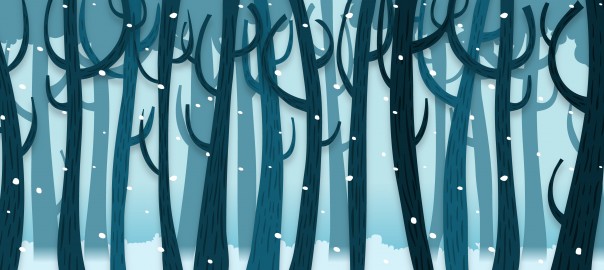
What do Robin Hood, Red Riding Hood, Hansel & Gretel, The Wind in the Willows and countless other novels, legends, fairy tales, fables and myths have in common? They have woods, of course–deep, dark, primeval, archetypal woods. It’s where the heart and soul of the story reside, and, not coincidentally, it’s where our hearts and souls reside, too.
The ancient forests of Northern Europe were the crucible of folk tale (and so of Disney too). Every European fair tale has a forest, for the Queen to send the hunter into to kill Snow White; for Red Riding Hood to meet the wolf in. In his musical Into the Woods, Stephen Sondheim picked up brilliantly the spectrum of fantasies that forest represents.
“Into the Woods: On British Forests, Myth and Now” by Ruth Padel
Disney’s movie version of Sondheim’s beloved musical will be released soon. In the meantime, I hope you enjoy the trailer if you haven’t seen it already:
Grandmother’s house is in those mythic woods. As is Baba Yaga, the big bad wolf, the night hunter, and a host of mythic beings. Even when we fear the woods, they are essential to our survival. Where will Baba Yaga go when the last tree falls and she has no shelter, no food, and no willing victims visitors? She will go to your house, of course. And do you want that? I think not. The way to keep the dark elements of the mind enchanted and imprisoned housed safely apart from gentler folk, fairy, and beast is to maintain the forests of the world. By doing so we will, at the same time, maintain the forests in our mind. They are parallel worlds.
There is hope.
The Half Earth Quest is a scheme to re-wild half of the planet, promoting biodiversity and a serious buffer for climate change. And truly, without trees we don’t breathe, so this scheme seeks to maintain arterial pathways by which the world breathes, life moves, and we dream our deep forest dreams.
I urge you to read more about it in “Can the World Really Set Aside Half of the Planet for Wildlife?” by Tony Hiss in the September 2014 issue of Smithsonian Magazine. He interviews “the great evolutionary biologist” E. O. Wilson, and M. C. Davis, a southern rags-to-riches kind of guy who animates the hopes of Wilson and others by purchasing large tracts of former longleaf pine forests for re-wilding. His Nokuse Plantation includes 51,000 acres of land, and the “…$12 million E. O. Wilson Biophilia Centre… where thousands of fourth through seventh graders from six counties [in Florida’s Panhandle] get free classes that let them hold real baby gopher tortoises…”
The article has a wealth of information, especially about the Western Wildway and other visions of expansive North American wildness.

